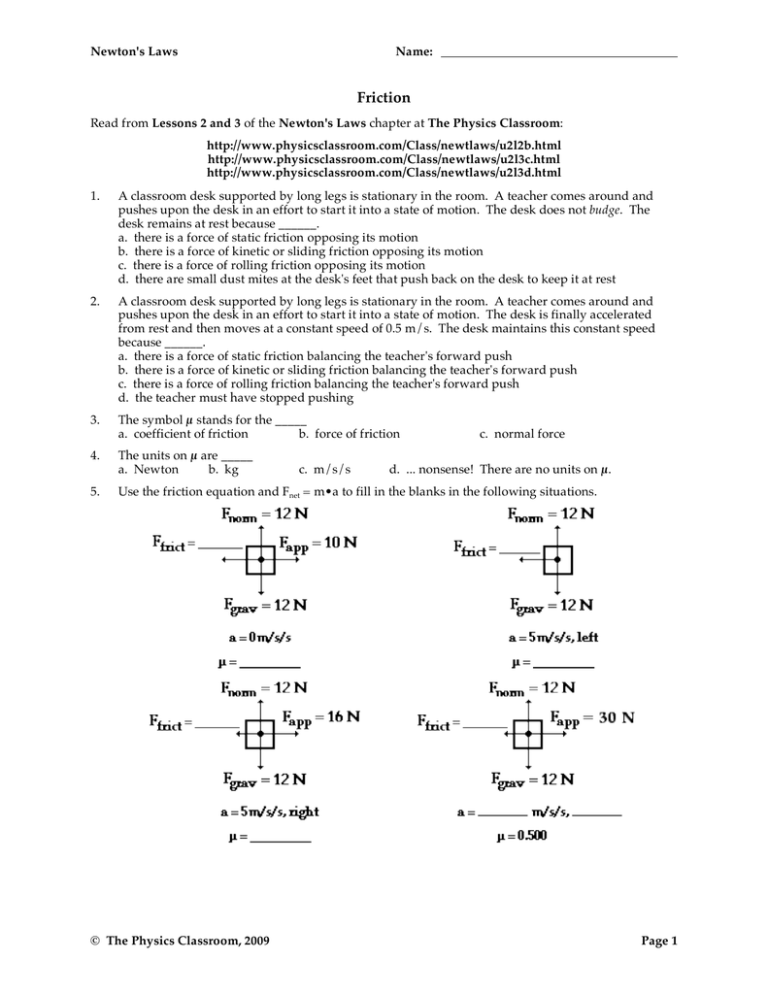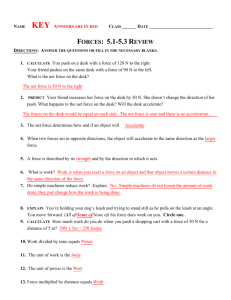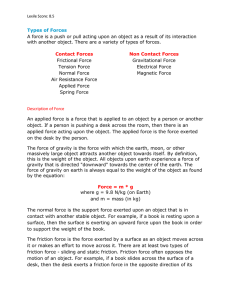Friction
advertisement

Newton's Laws Name: Friction Read from Lessons 2 and 3 of the Newton's Laws chapter at The Physics Classroom: http://www.physicsclassroom.com/Class/newtlaws/u2l2b.html http://www.physicsclassroom.com/Class/newtlaws/u2l3c.html http://www.physicsclassroom.com/Class/newtlaws/u2l3d.html 1. A classroom desk supported by long legs is stationary in the room. A teacher comes around and pushes upon the desk in an effort to start it into a state of motion. The desk does not budge. The desk remains at rest because ______. a. there is a force of static friction opposing its motion b. there is a force of kinetic or sliding friction opposing its motion c. there is a force of rolling friction opposing its motion d. there are small dust mites at the desk's feet that push back on the desk to keep it at rest 2. A classroom desk supported by long legs is stationary in the room. A teacher comes around and pushes upon the desk in an effort to start it into a state of motion. The desk is finally accelerated from rest and then moves at a constant speed of 0.5 m/s. The desk maintains this constant speed because ______. a. there is a force of static friction balancing the teacher's forward push b. there is a force of kinetic or sliding friction balancing the teacher's forward push c. there is a force of rolling friction balancing the teacher's forward push d. the teacher must have stopped pushing 3. The symbol µ stands for the _____ a. coefficient of friction b. force of friction 4. 5. The units on µ are _____ a. Newton b. kg c. m/s/s c. normal force d. ... nonsense! There are no units on µ. Use the friction equation and Fnet = m•a to fill in the blanks in the following situations. © The Physics Classroom, 2009 Page 1





